Schotia latifolia
| Botanical Name | Schotia latifolia |
|||||||||||||||||||||
| Family | Fabaceae - The legume and pod-bearing family. (Pea & Bean Family) |
|||||||||||||||||||||
| Pronunciation | SHOT-ee-uh lat-ih-FOE-lee-ah |
|||||||||||||||||||||
| Common Name(s) |
English: Bush boer-bean; Forest Boer-bean
Afrikaans: Bosboerboon
IsiXhosa: umgxama; Umaphipha; umXamo
IsiZulu: umGxamu
|
|||||||||||||||||||||
| Plant Group |
|
|||||||||||||||||||||
| Plant Size |
|
|||||||||||||||||||||
| Position |
|
|||||||||||||||||||||
| General Information |
|
|||||||||||||||||||||
| Specific Information | Schotia latifolia has a dense rounded crown with leathery, dark green leaves and a smooth reddish-brown to grey trunk. Although relatively slow growing, this is well worth it for the deep cool shade it provides. The large seed pods that follow the flowers are lime green to pinkish brown, tuning dark brown when ripe. |
|||||||||||||||||||||
| Ad Break | ||||||||||||||||||||||
| Flowers | ||||||||||||||||||||||
| Description | clusters at the ends of stems |
|||||||||||||||||||||
| Season |
|
|||||||||||||||||||||
| Colour |
|
|||||||||||||||||||||
| Growth Rate |
|
|||||||||||||||||||||
| Plant Uses |
|
|||||||||||||||||||||
| Distribution and Habitat | in the Eastern Cape and small areas in Mpumalanga and Limpopo Province, in forests, along forest margins and in scrub and bushveld |
|||||||||||||||||||||
| Planting Suggestions | Mulch well and water regularly during the first year or two for optimum growth. You can control the size of the tree with the amount of water it is given: regular, deep watering will result in a much bigger tree than one given occasional watering. The old method of digging a deep hole and filling it with soil and compost has resulted in many trees failing to thrive, dying, rotting at the base or worse still, falling over in later years due to poor root development. Refer to the following sites for the best method of planting trees: International Society of Arboriculture: New Tree Planting Tree People: Plant the right way For those of you who have a clay problem try: |
|||||||||||||||||||||
| Medicinal Uses | The edible seeds have been used for food both indigenous African peoples and the settlers and farmers. The unripe pods were roasted, and the steamed seeds removed and eaten. The bark produces a greenish coloured dye. |
|||||||||||||||||||||
| Ad Break | ||||||||||||||||||||||



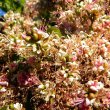
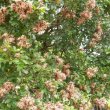
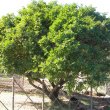
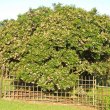
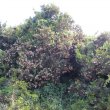
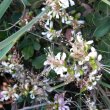
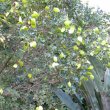
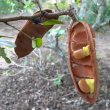
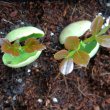


Discuss this plant
Share knowledge, ask a question or give an experience.